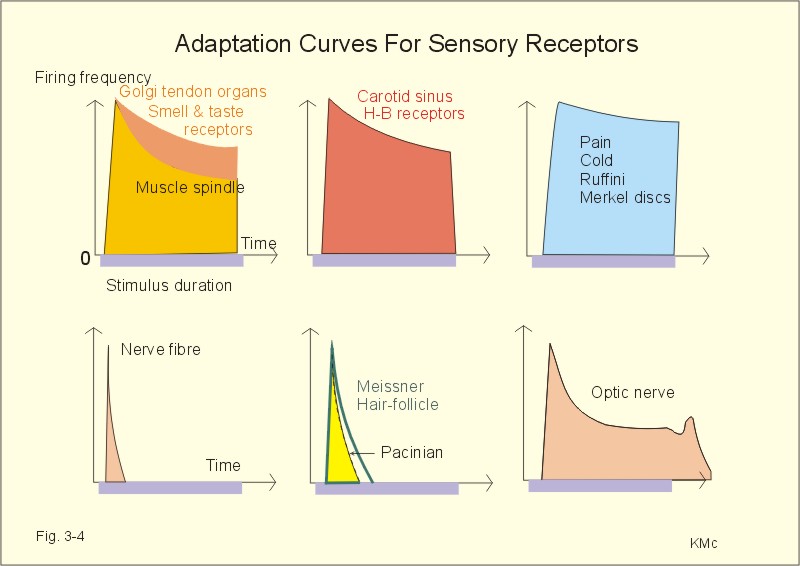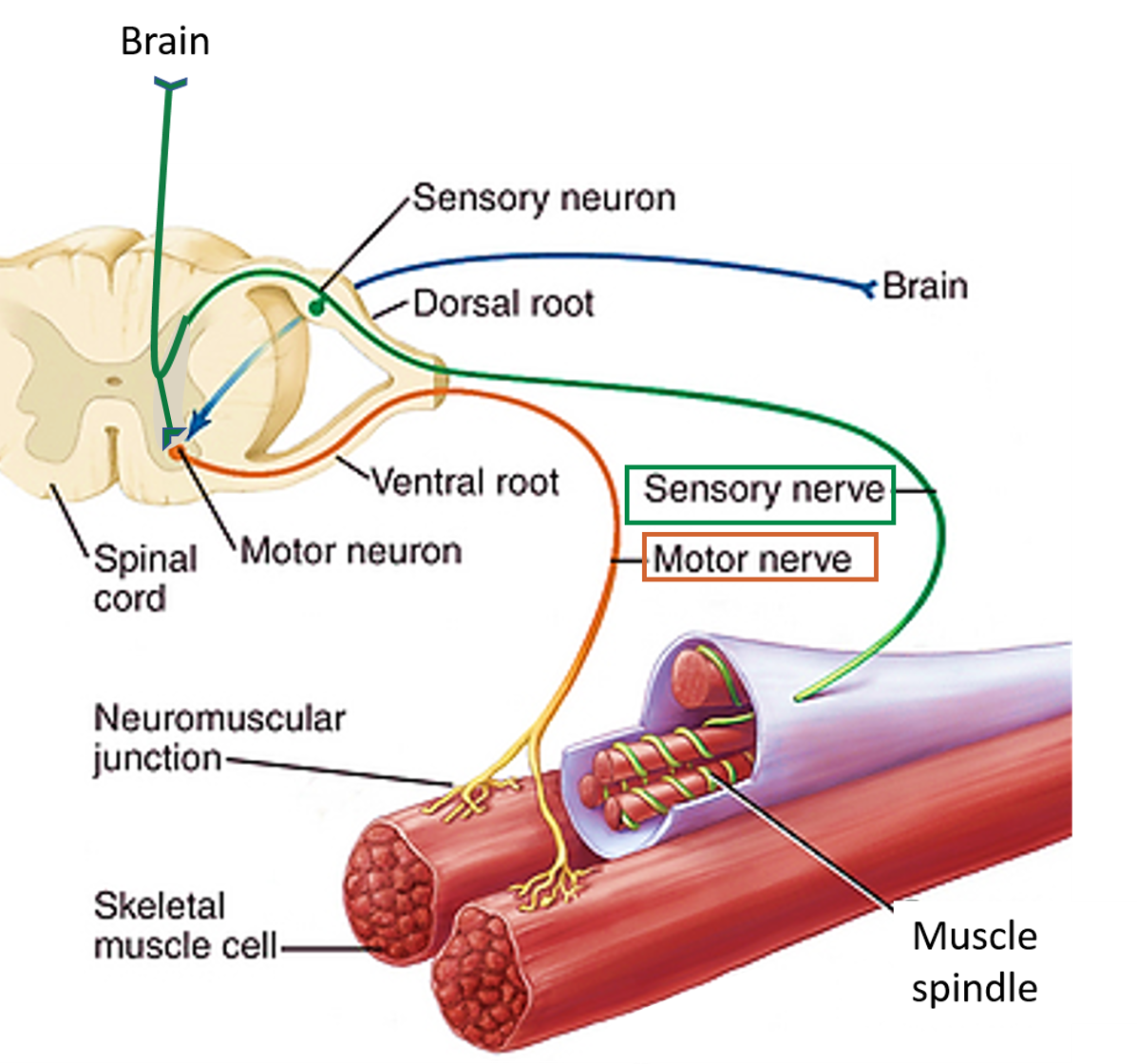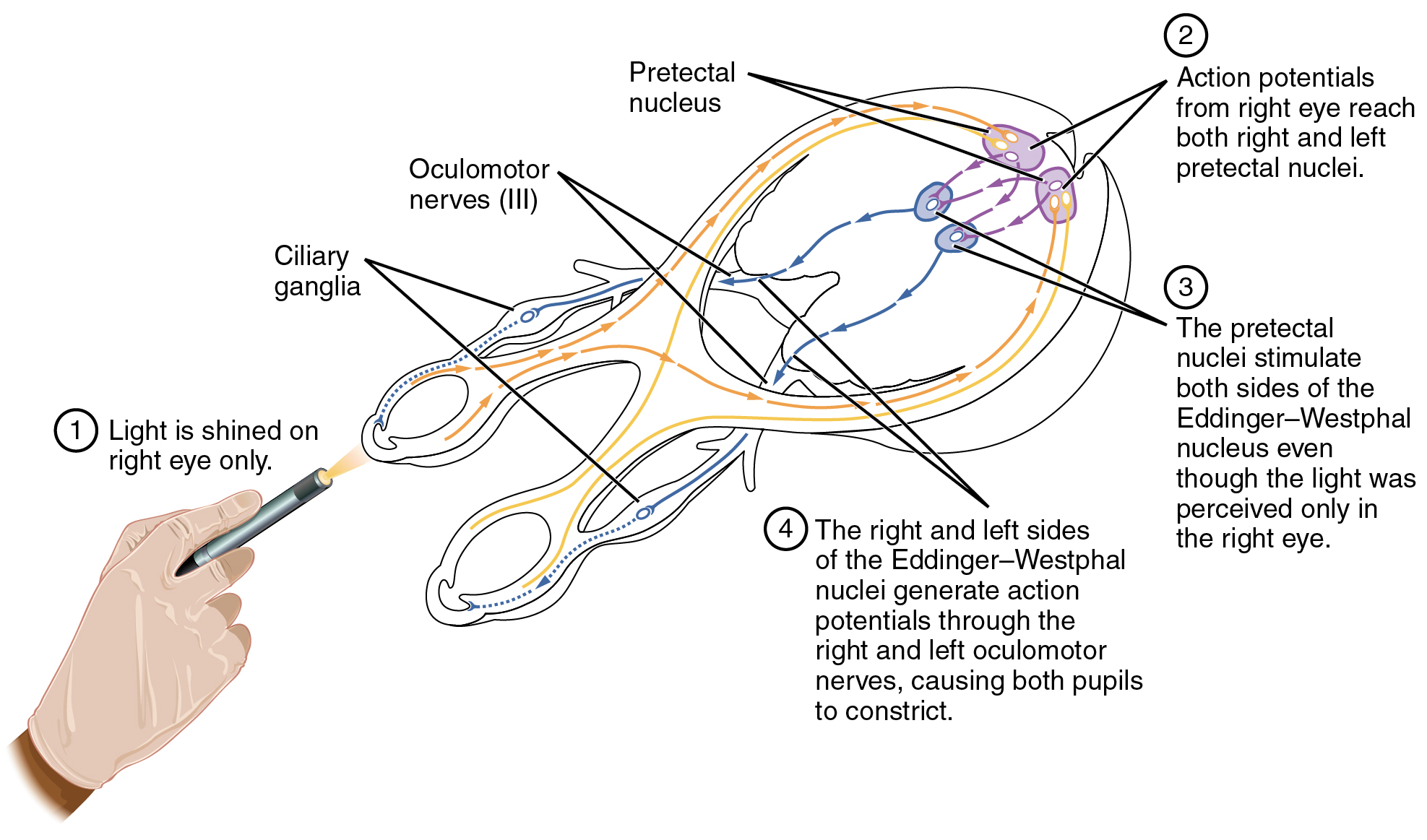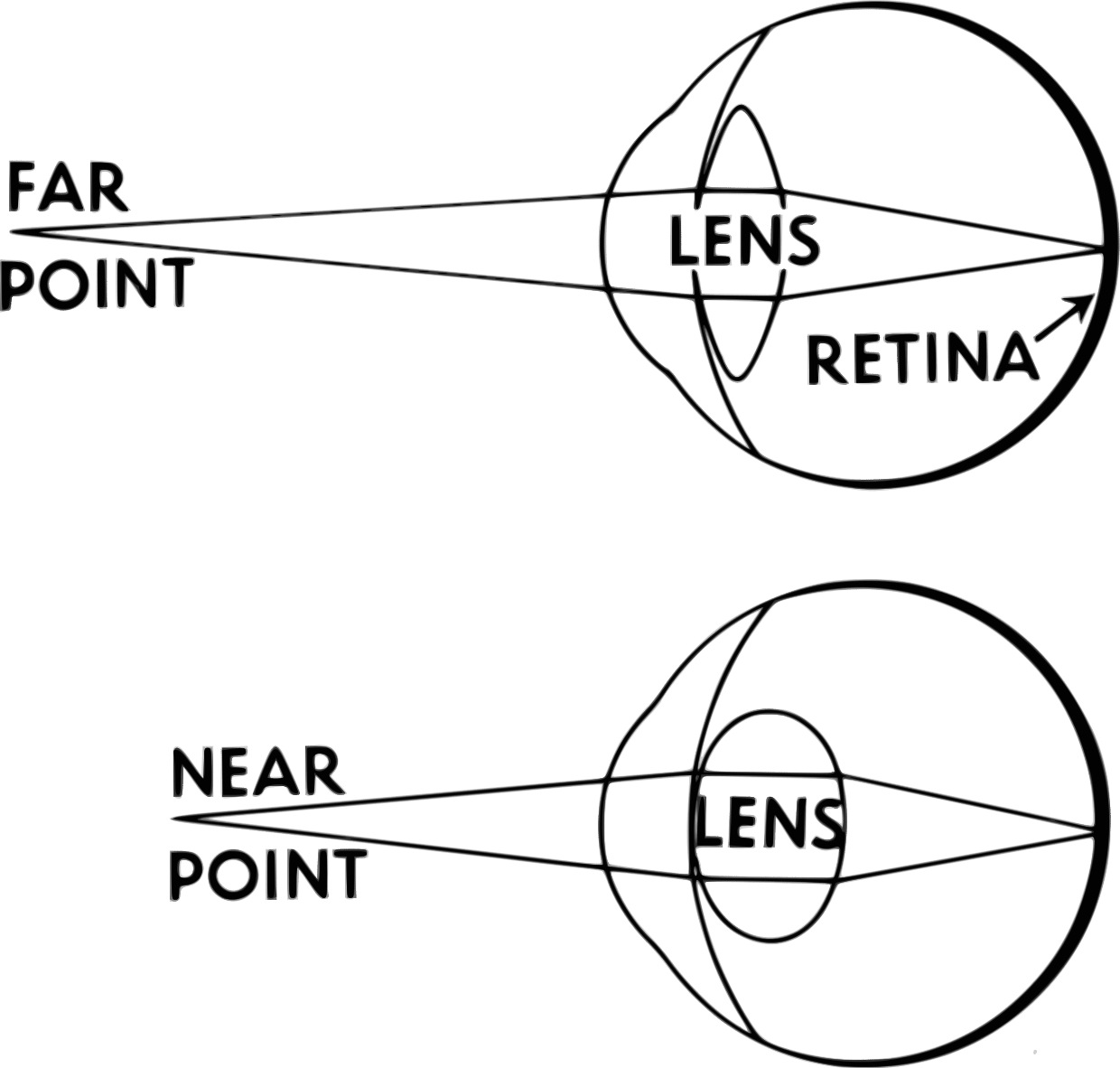
Sacral nerve stimulation increases gastric in rats a spinal afferent and vagal
Neural accommodation or neuronal accommodation occurs when a neuron or muscle cell is depolarised by slowly rising current ( ramp depolarisation) in vitro. [1] [2] The Hodgkin-Huxley model also shows accommodation. [3]

Auditory Nerve A section of the auditory nerve in a young … Flickr
When a current is passed into an excitable tissue V is raised at the cathode, lowered at the anode: if V is raised enough, a state of instability is reached and "excitation" occurs. In a recent preliminary treatment of this subject (Hill, 1935, b) the name "cathode potential" was used.

a) The pupil constriction pathway. b) the pupil dilation pathway.... Download Scientific Diagram
Archive of all online content. January 1938

Simplified nerve physiology and the clinical applications YouTube
Single-unit anatomical techniques have demonstrated that direct nerve connections between the midbrain near-response region and the cerebellum exist in rhesus monkeys. In the cerebellum, there are cell activities related to lens accommodation (Bando and Toda, 1991; Gamlin and Clarke, 1995; Gamlin et al., 1996; Zhang and Gamlin, 1998).

New Human Physiology Ch 3
2022 Nov 15 Authors Mahsaw Motlagh , Ragi Geetha PMID: 31194346 Bookshelf ID: NBK542189 Excerpt The accommodation reflex is the visual response for focusing on near objects. It also has the name of the accommodation-convergence reflex or the near reflex.

nerve innervations of muscles
Chapter 50 Neurology: Anatomy & Physiology Saltatory conduction → ↑ speed of propagation Gray matter: CNS regions containing nerve cell bodies, unmyelinated axons White matter: CNS regions containing myelinated axons Structural and functional classification Unipolar neurons One process, divides into two branches Mostly function in PNS as first-order sensory neurons; conduct impulses.

There are multiple types of nerves that innervate the brain. Some carry sensory inputs from the
Accommodation of nerve Accommodation of nerve (Science: anatomy, nerve) The property of a nerve by which it adjusts to a slowly increasing strength of stimulus, so that its threshold of excitation is greater than it would be were the stimulus strength to have risen more rapidly. Last updated on July 21st, 2021 You will also like. Sensory Systems

This diagram shows the connections between the different nerves and pathways in the eyes. A hand
Schacher theory of accommodation (2006) - This theory states that when the lens is in focus, there is increased tension on the lens through the equatorial zonular fibers and when there is contraction of the ciliary muscle, the zonular fibers located equatorially increase their tensile strength.

Neuropathy, Nerve Pain and Social Security Disability Patient Talk
305 612.816 Excitation and Accommodation in Nerve By A. V. Hill, F.R.S., Foulerton Research Professor of the Royal Society (From the Department of Physiology, University College, London) {Received November 19, 1935) I—Introduction When an electric current is passed through a living excitable tissue it

Which Neuron Transmits Signals From The Pns To The Central Nervous System? The 9 Latest Answer
The human eye can see any object placed at a variable distance from it by altering its structure (by altering the anterior lens surface). This phenomenon is called accommodation.[1] Accommodative dysfunction is a common vision disorder among the pediatric population with or without visual disturbance and binocular dysfunction. Accommodative dysfunction is either accommodative insufficiency or.

Anatomy Of The Visual System ANATOMY
Accommodation refers to dynamic changes in the refractive power of the lens, which is achieved by modifying the shape of the lens. The shape of the lens is controlled by two opposing forces: The internal elasticity of the lens, which tends to keep the lens rounded up. A more curved lens refracts light to a greater degree.

Ocular Refraction Neurology Teachmephysiology
The accommodation reflex is the visual response for focusing on near objects. It also has the name of the accommodation-convergence reflex or the near reflex. It is synkinesis which consists of the of both eyes, contraction of the ciliary muscle resulting in a change of lens shape (.

Snapshots of Life Wired for Nerve Regeneration NIH Director's Blog
Abstract. The accommodative effects of alpha- and beta-adrenergic stimulation were investigated in human subjects by measuring changes in the response ACA ratio and in the response accommodative amplitude as a result of instilling hydroxyamphetamine hydrobromide and phenylephrine hydrochloride. Statistically significant increases in the ACA.

Sensory and Motor Pathways in the Central Nervous System Nervous system, Brain diagram
Archive of all online content. January 1938 January 2020. 1930s; 1940s; 1950s; 1960s; 1970s; 1980s; 1990s; 2000s; 2010s; 2020s

Schematic drawing of the pupillary light reflex pathway. By way of the... Download Scientific
Accommodation for Near Vision The accommodation reflex (or near response) is a three-part reflex that brings near objects into focus through lens thickening, pupillary constriction, and inward rotation of the eyes—eye convergence.

The Vestibular System and EOMs Part 2 Anatomie und physiologie
Semantic Scholar extracted view of "THE BREAKDOWN OF ACCOMMODATIONNERVE AS MODEL SENSE-ORGAN" by C. Bernhard et al.